Pioneer SP-BS22-LR Bookshelf Loudspeakers
Round two with Pioneer's Mr. Andrew Jones. As you may or may not know, I was very disappointed in the Pioneer BS21's that I reviewed. You can see that over here if you are interested. For the Pioneer BS22 Jones was able to design the speaker drivers themselves to get the most out of the price point. No off the shelf parts at all is almost unheard of at this price range, so yet again expectations are set high. High expectations have never turned out very good for the speakers I review, but here goes.

Well, This looks good. A nice looking pair of speakers. I miss the fancy pioneer emblem that was on the BS21's but having a real grill that doesn't look like an iron curtain is a big improvement.
Visuals:

What the hell dude, the tweeter is supposed play high frequencies through the part that looks like a thick plastic chain link fence. Well, the grills are worthless. I guess you could try and cut a clear path through the plastic, but it's best to just toss them in the trash if you want to get the most out of these speakers.
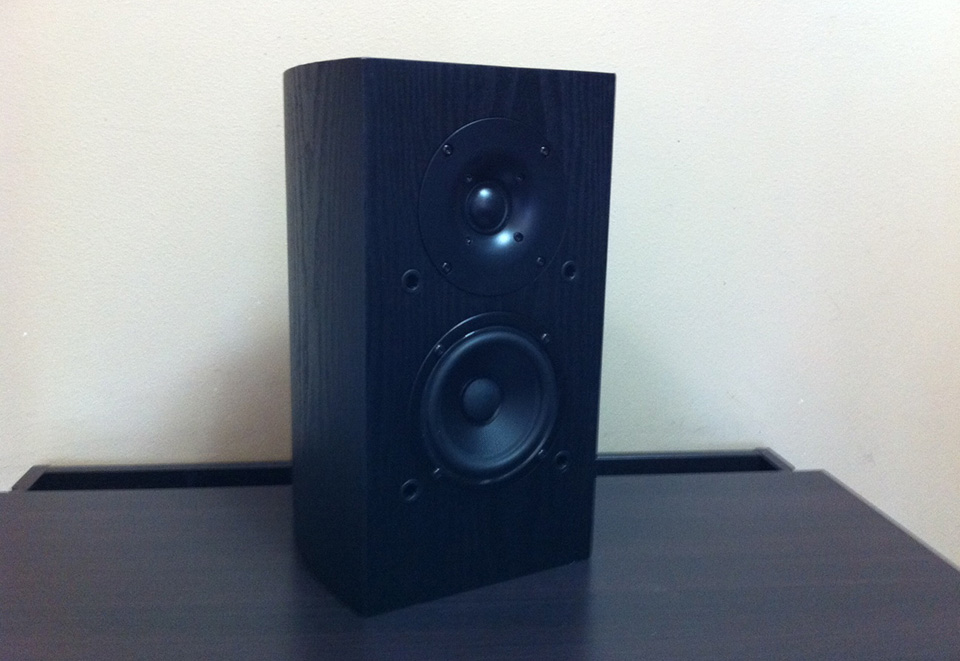
Behind the grill we can see the fancy custom drivers hand crafted by a tiny clone army of Andrew Joneses. The look is improved from the grill off of the BS21, but man it's still an odd proportioned speaker with it's little woofer and big box.
Drivers:
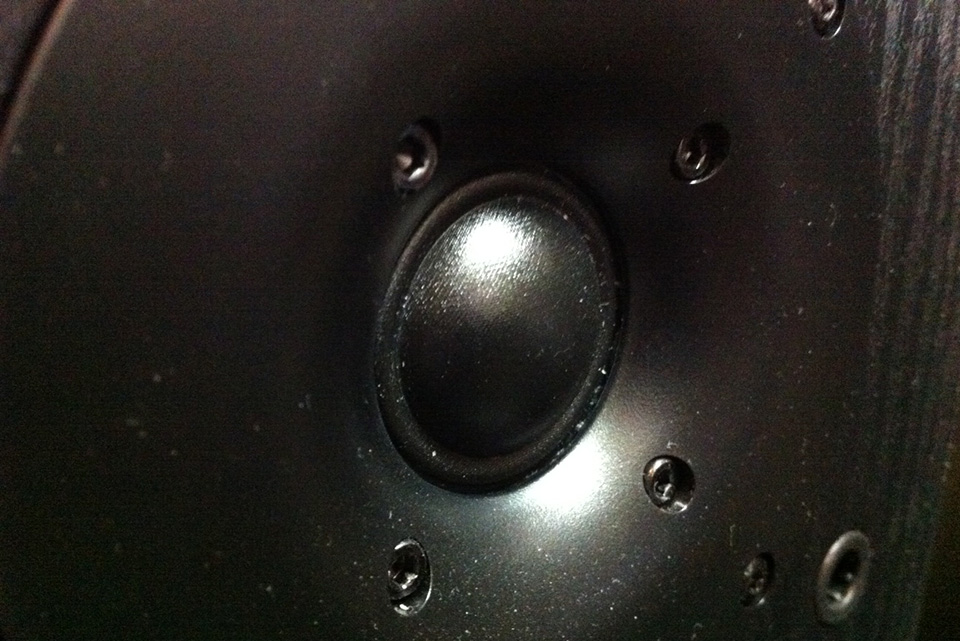
The tweeter is set in a deep wave guide. Tweeters with that kind of horn loading are usually screamers with silly high efficiency.
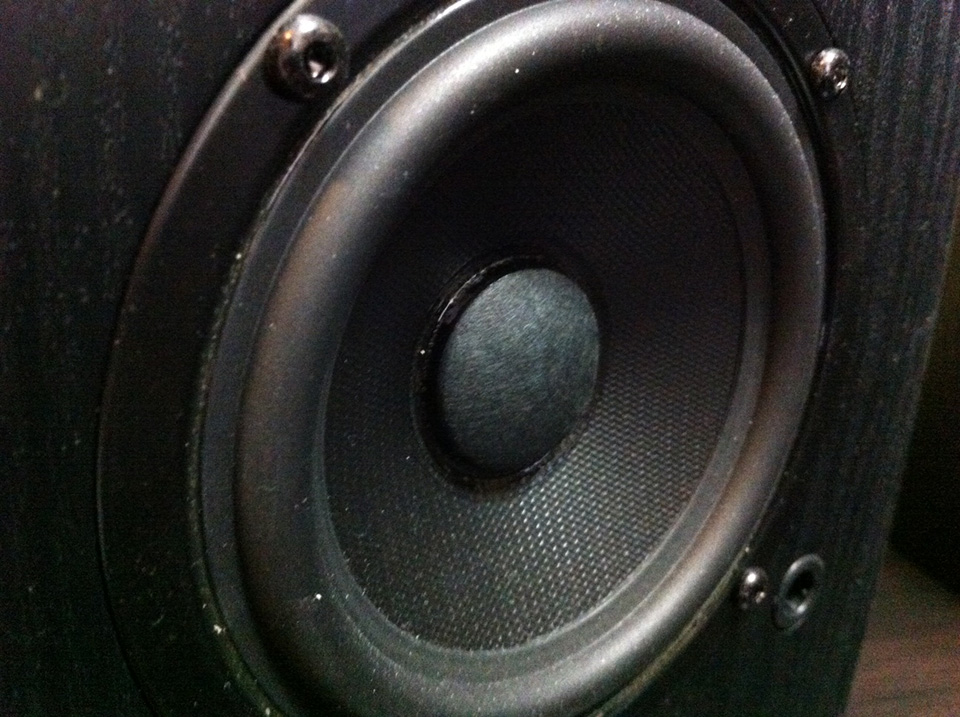
Woofer is some type of plastic with a grid pattern embossed on it. First time I've seen something like that. I'm guessing he was trying to spread out the cone resonance to make it less awful to deal with in the crossover. It's a nice touch and reminds me of the Scanspeak Illuminator's embossed paper cone I used on my main system. The surround is butyl rubber and is pretty stiff considering the size of the driver.
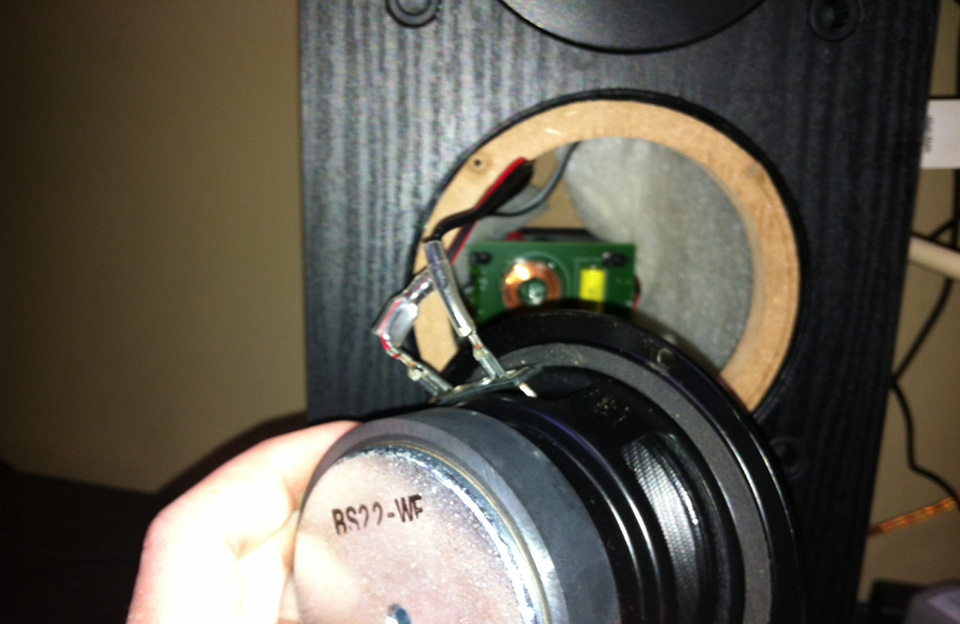
Definately a custom driver, looks pretty sharp with a really big magnet on the back. Also note that you can see a poly capacitor on the crossover for the tweeter, supposedly poly is better than electrolytic for crossovers.
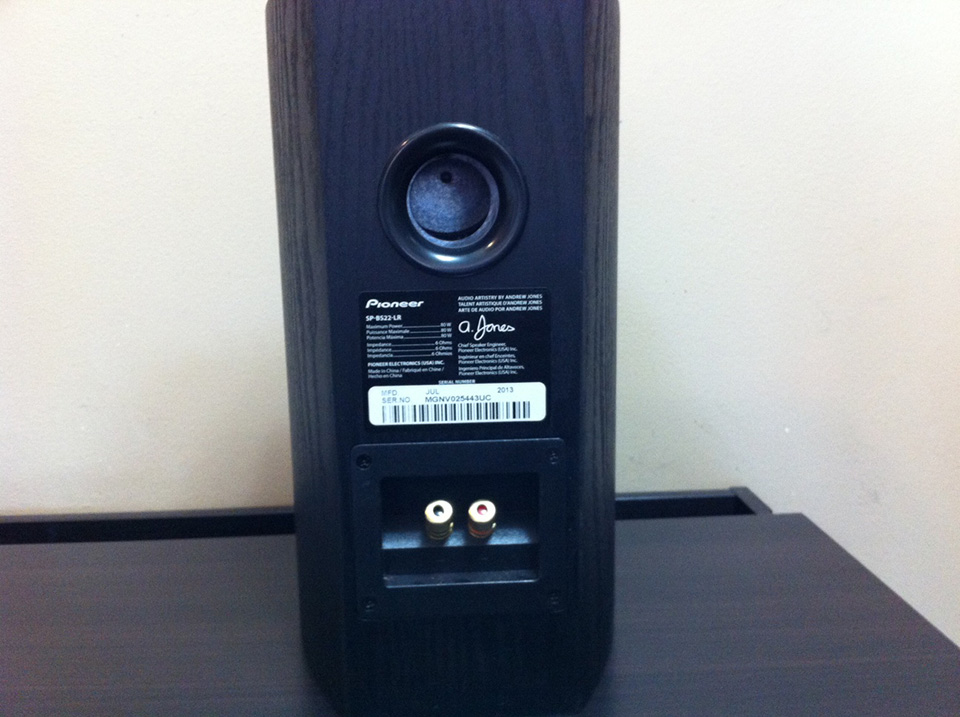
The back of the speaker is identical to the BS21's with acceptably nice speaker terminals and a port.
Setup:
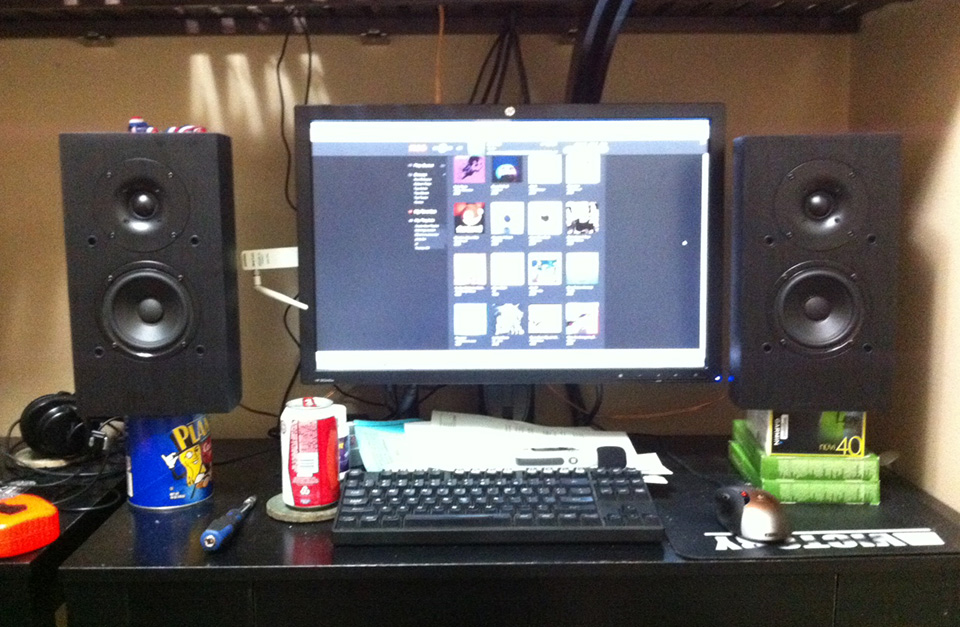
I'm looking at these as desktop speakers for this review, if you want to hear my impression of how they sound when they are not directly in your face I'll cover that in my final thoughts. These are up on stands of random non vibrating garbage to bring the tweeter's up to ear height, and pull them out from the walls at least a foot to let the rear port work. I messed with toe-in, but the wave guide is like a death ray of cymbal energy and the imaging sounds too much like headphones this close and toed in, so out pointed they go.
Uncorrected impressions:
Not bad... yep... well... After about a month of listening...
Cymbals are too sharp, the midrange is a bit thin, and they are boomy as well, but over all these are doing the job for the price. These play much louder with than the BS21's although the little woofers will probably pop pretty quick if you try to get crazy. They don't need a sub on the desktop, but if you plan on listening away from the desk a sub would be pretty useful.
I would say that the flaws of this speaker are similar to those of the more expensive Audio Engine P4, but better and worse at the same time. The waveguide's extreme loading makes it very harsh on the top along with a very narrow dispersion of those frequencies. I end up hiding from the tweeter, but if you go too far off axis the whole top end disappears. A thin midrange is one that makes boys sound a bit too much like girls, and can audibly shrink both heads and instruments. It's noticeable here, but it's not too bad. As for dispersion, these definitely project more energy forward with the big front baffle, as such they don't throw a giant stage near field. The sound stage is limited to the confines of the speakers. If you want it bigger you are gonna need to move the speakers further apart. Pulling the speakers further apart means playing with toe-in on the speakers as you move them apart to keep the frequency response balanced.
Lets take some measurements:
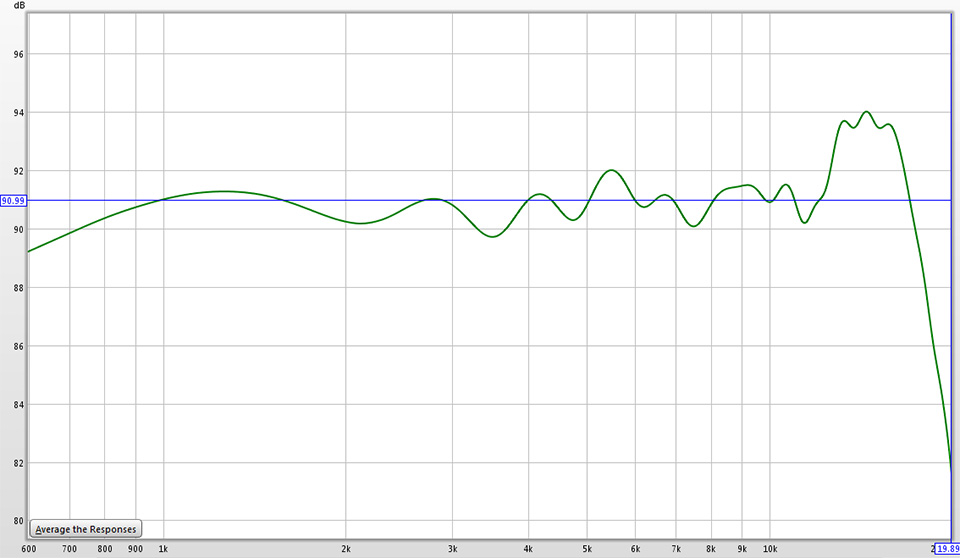
This is on the tweeter axis, close windowed and we can see one issue here, that tweeter is spitting hot fire above 12k.
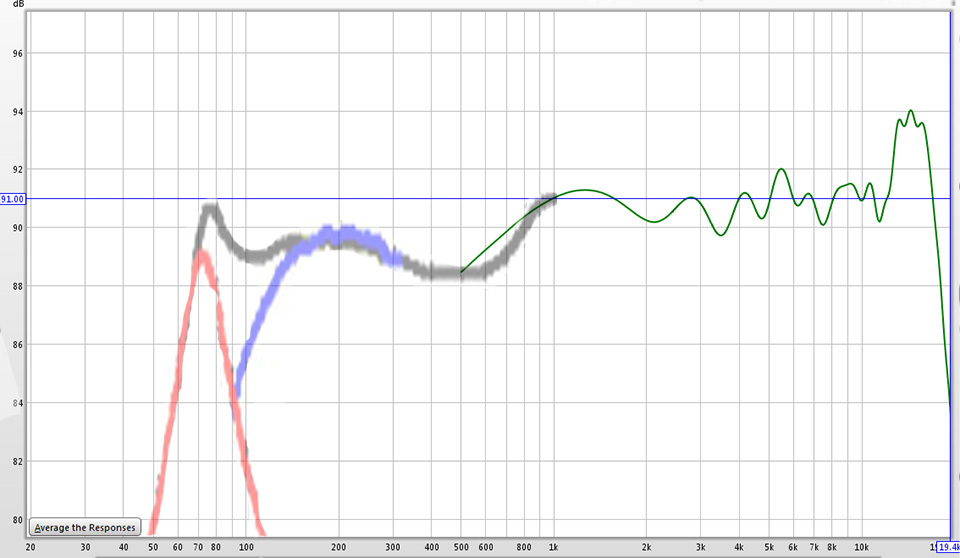
My data is pretty shit below 1k, so I'm going to default to old faithful below that. Stereophile did a full write up on the Pioneer BS22's and gave them a passing grade as well as ran them through the ringer of measurements. Now Stereophile does 30 degree horizontaly averaged measurements to get an average frequency response. That's not the way I do things. In Near field desktop listening speakers have less space to work out their problems, so I find the direct on axis measurement to be the most accurate representation of what I hear. With a speaker this size below 1k the averaged response should be the same as directly on axis so I can use that data to fill in the blanks.
DSP Correction:
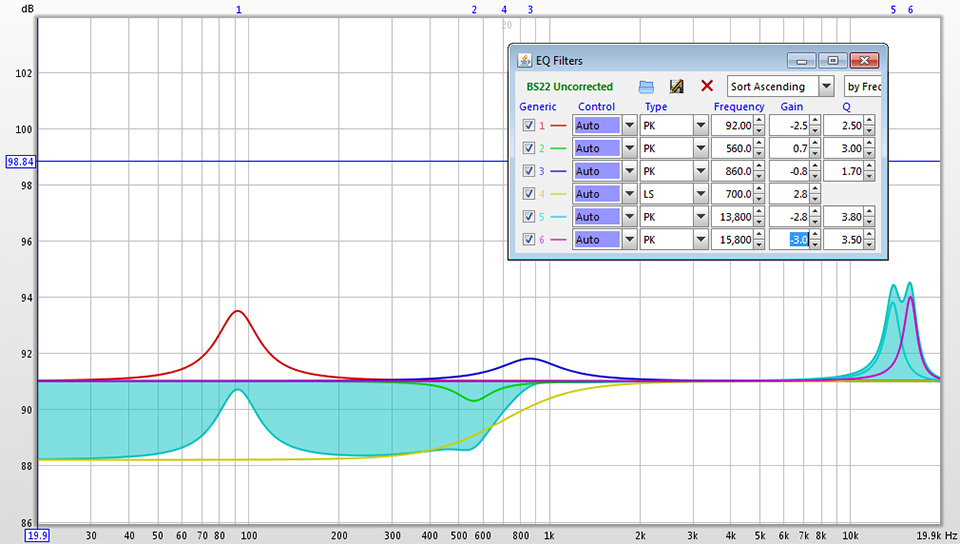
Using a combinations of my measurement and Stereophile's data in conjunction with a few hundred hours of listening I came up with this correction, which is an updated correction as of this review. I'll start from left and move to the right. The response below 800hz was about 2.8dB down from the rest of the speaker, so that got a boost. To my ear it sounds like the port is tuned too high, so I cut the bass a little where the port and the woofer overlap to clean that up. The only other thing I messed with was the screaming top end which got chopped.
Corrected impressions:
Well, these speakers were alright before, and outside of the narrow horizontal dispersion they are damn near perfect according to my ear. With the correction you can toe them in without murdering your ears, and they sound good and detailed setup that way.
Final thoughts:
These are large speakers and putting them on the desktop is going to eat up a bunch of space. I really wish these had been standard non waveguide tweeters on this speaker. I honestly enjoy the corrected Micca MB42x speaker more on the desktop, so my recommendation for them stands.
As for the living room or systems that you can not apply the DSP correction to, the winner is definitely the Pioneer BS22. The Pioneer in its' natural form is the best tonally balanced cheap speaker out of the bunch I've that I've heard or reviewed. While I don't enjoy a horizontally narrow sounding speaker, it has it's upside with more detailed sound with a top end that is not colored as much by the room. If that sounds like fun to you this speaker might be right up your alley.
Click here to buy Pioneer BS22 speakers.
Click here to get the DSP correction file for the Pioneer SP-BS22-LR speakers.
Check out the system finder to see what I recommend.
Other content you may like:
- Vanatoo Transparent One Review - Software update brings new standard of performance!
- Lone Star Audio Fest 2018 - Staying up late, drinking too much, smoking like chimneys!
- Andrew Jones goes back the be begining, ELAC B5.2 Debut 2.0 Review is up!
- New Scores for all reviewed speakers - Compare and sort for fun!
- Creative Sound Solutions DIY Solution for the high end - CSS Criton 1TD v2 review is up!
- Dayton Makes a Budget Desktop speaker with a crossover - Dayton Audio MK402 review is up!
- Smaller than small, deeper than deep - iLoud Micro Monitor review is up!
- Vanatoo's new speaker, The Transparent Zero review is up!
- SVS Prime Bookshelf Review is now available for your viewing pleasure
- ELAC A-Stock UB5 Listening Impressions are up!
- 30 years in the making, the ancient Bose 901 finally gets measured - The Bose 901 review is up!
- Lock and load, we are hitting the bottom of the barrel with both barrels - The Logitech z313 review is up!
- Bulletproof speakers... No, it's just the B&W 686 S2 Review!
- Declare independence from the British sound! - The KEF Q300 review is up!
- Recommended System Finder - Just in time for the Holidays!
- JBL LSR308 Studio Montor - Super Massive Epic Review!
- Two years after starting this site I finally get around to talking about my stereo.
- Small and cheap speakers transform into retarded and good... Micca COVO-S Review!
- AMT tweeter on a B652? The Dayton B652-AIR is reviewed for great justice!
- JBL LSR305 Studio Monitor Review!
- Zu Essence Review!

